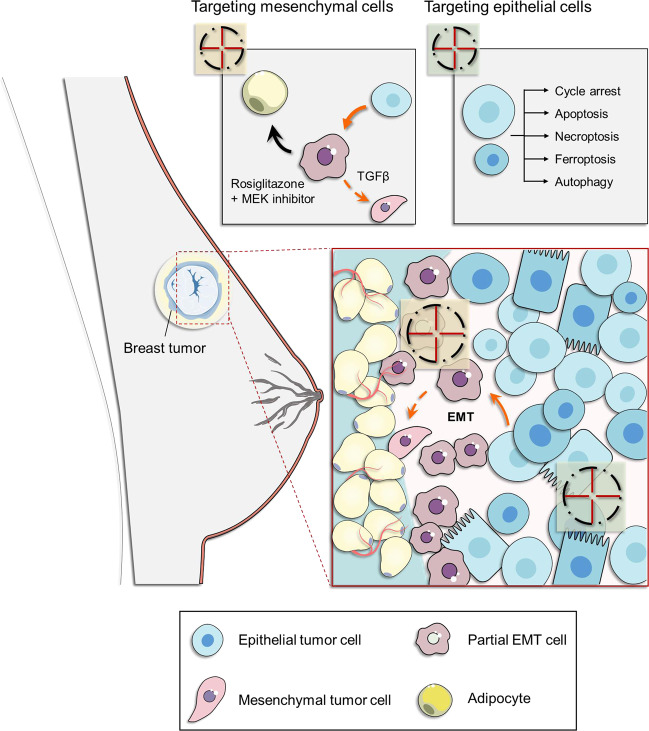Fig. 4.
EMT can be hijacked for therapeutic purposes by forcing trans-differentiation. EMT frequently occurs at the invasive front of the individual tumor, which also allows cancer cells to achieve a high plasticity level due to the mechanistic correlation and functional overlap between the EMT process and the CSC phenotype. The mesenchymal characteristics of those tumor cells are embodied in their potential for re-differentiation and possibly even trans-differentiation. Meanwhile, cancer cells also achieve resistance to a variety of conventional therapeutics during the EMT process, commonly resulting in tumor recurrence. However, the plasticity of those cancer cells can be utilized for therapeutic purposes by forcing their trans-differentiation process towards postmitotic and well-differentiated phenotypes rather than by direct killing. The treatment of an MEK inhibitor—trametinib—together with an adipogenesis inducer—rosiglitazone—can strongly promote the direct lineage conversion of those aggressive cancer cells to “peaceful” adipocytes. This provides the potential of preventing treatment failure by combining trans-differentiation therapy with multiple conventional therapies, efficiently killing the proliferative cancer cells that form the bulk of the tumor as well as eradicating invasive cells that escape conventional therapies by the development of an EMT/CSC phenotype. EMT epithelial–mesenchymal transition, CSC cancer stem cell

